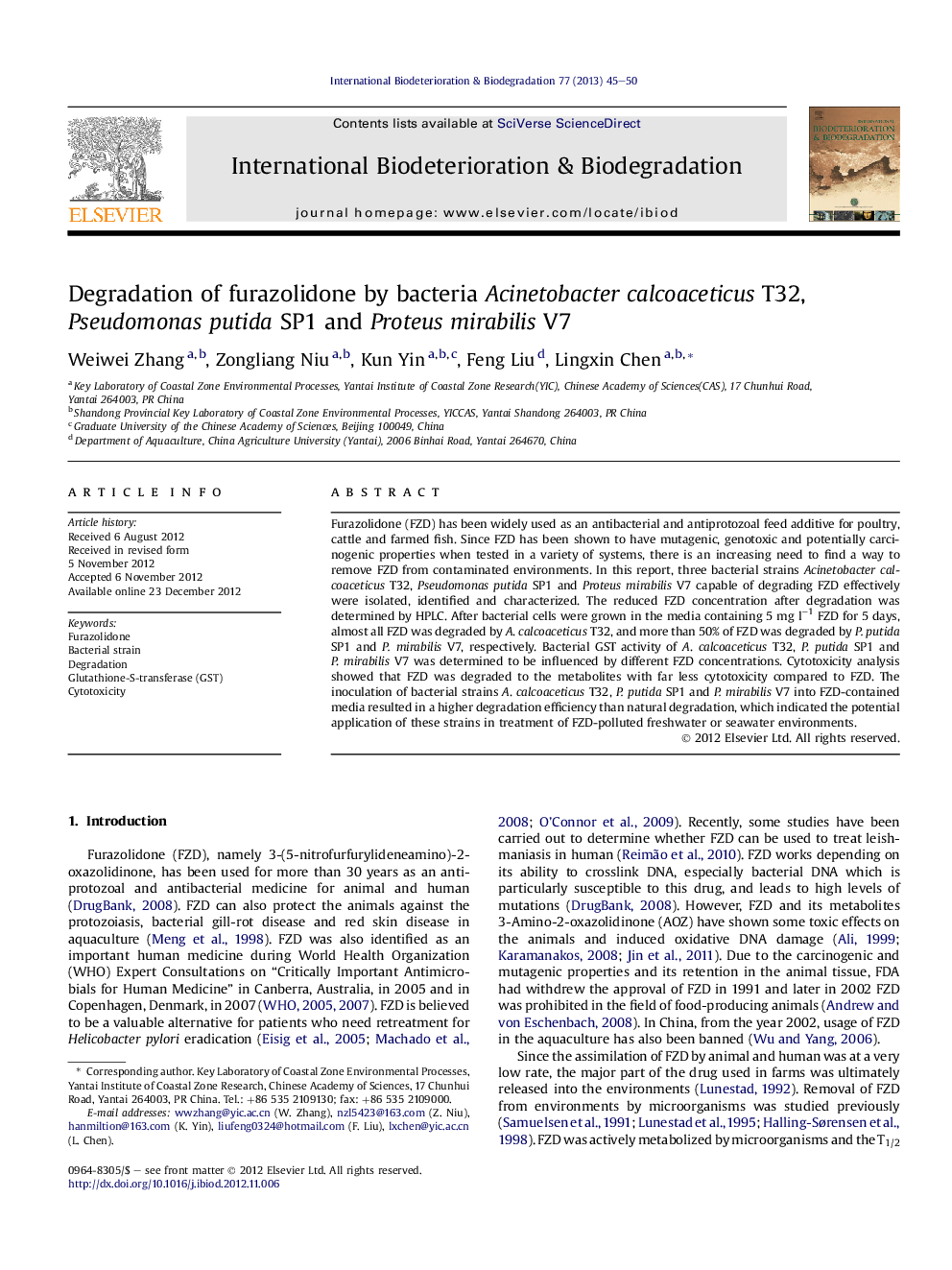| Article ID | Journal | Published Year | Pages | File Type |
|---|---|---|---|---|
| 4365040 | International Biodeterioration & Biodegradation | 2013 | 6 Pages |
Furazolidone (FZD) has been widely used as an antibacterial and antiprotozoal feed additive for poultry, cattle and farmed fish. Since FZD has been shown to have mutagenic, genotoxic and potentially carcinogenic properties when tested in a variety of systems, there is an increasing need to find a way to remove FZD from contaminated environments. In this report, three bacterial strains Acinetobacter calcoaceticus T32, Pseudomonas putida SP1 and Proteus mirabilis V7 capable of degrading FZD effectively were isolated, identified and characterized. The reduced FZD concentration after degradation was determined by HPLC. After bacterial cells were grown in the media containing 5 mg l−1 FZD for 5 days, almost all FZD was degraded by A. calcoaceticus T32, and more than 50% of FZD was degraded by P. putida SP1 and P. mirabilis V7, respectively. Bacterial GST activity of A. calcoaceticus T32, P. putida SP1 and P. mirabilis V7 was determined to be influenced by different FZD concentrations. Cytotoxicity analysis showed that FZD was degraded to the metabolites with far less cytotoxicity compared to FZD. The inoculation of bacterial strains A. calcoaceticus T32, P. putida SP1 and P. mirabilis V7 into FZD-contained media resulted in a higher degradation efficiency than natural degradation, which indicated the potential application of these strains in treatment of FZD-polluted freshwater or seawater environments.
► Three bacteria capable of degrading furazolidone were isolated and characterized. ► Bacterial GST activity was stimulated by FZD. ► Metabolites of furazolidone generated by bacterial degradation barely possessed cytotoxicity.
